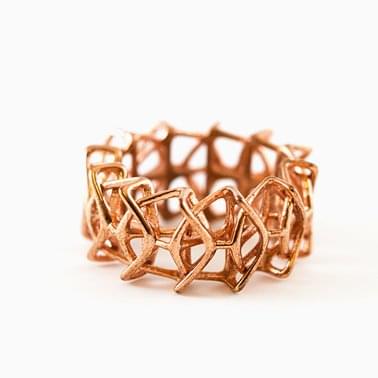Design Specifications
Pricing Info
The pricing for Copper is based on model volume, which is the volume of your model used to calculate the material cost (mm³).
Additionally, a startup cost is applied to the price of your model. This is a fixed cost independent from the parameters of your model. If you order two or more copies of a model, the price automatically decreases because the preparation of multiple copies can be carried out more efficiently.
Typical Use
Copper can be used for small, robust and decorative models such as coins, medals, connectors or statues.
Technology

Wax 3D printing and lost-wax casting are used to build your design when using this material. The wax printing process is a type of Stereolithography that uses a wax-like resin. Support structures are printed along with the model to make sure your model doesn’t fall apart. These support structures are automatically generated and manually removed after the printing process. After support structures are removed and your model is cleaned, the model can be prepared for casting.
First, one or more wax sprues will be attached to your model. Next, the sprue and model will be attached to a wax ‘tree’, together with a bunch of other models. The tree is then placed in a flask and covered in fine plaster. When the plaster solidifies, it forms a mold for copper casting. The plaster mold is then put in an oven and heated for several hours to a point where the wax is completely burned out.
Then, molten copper is poured in to fill the cavities left by the wax. Once the copper has cooled and solidified, the plaster mold is broken and the copper models are removed by hand. Then, your model is filed and sanded to get rid of the sprues, and finally polished.
Additional Information
- Due to the nature of the process (lost-wax casting and printing) used in the production of copper, interlocking or enclosed parts are not possible
- Copper is very sensitive to oxidation and the surface will acquire a greenish hue over time. Corrosion can occur at any moment and is not at all indicative of the quality of the material; in fact, it can already occur directly after the production of your model. Therefore, we cannot guarantee that your copper designs will remain corrosion-free when you receive them
- Due to its sensitivity to oxidation, we don’t offer samples for copper.










